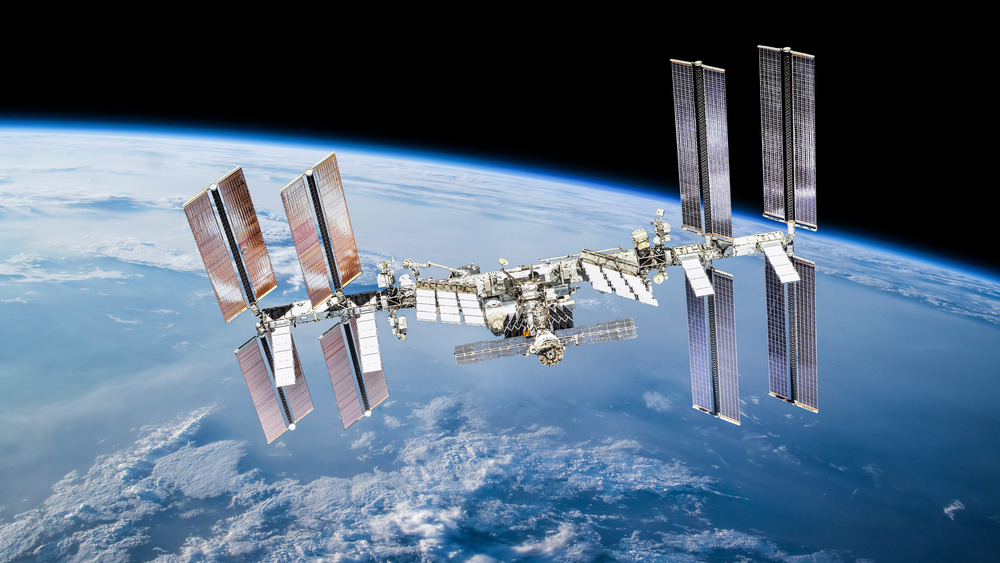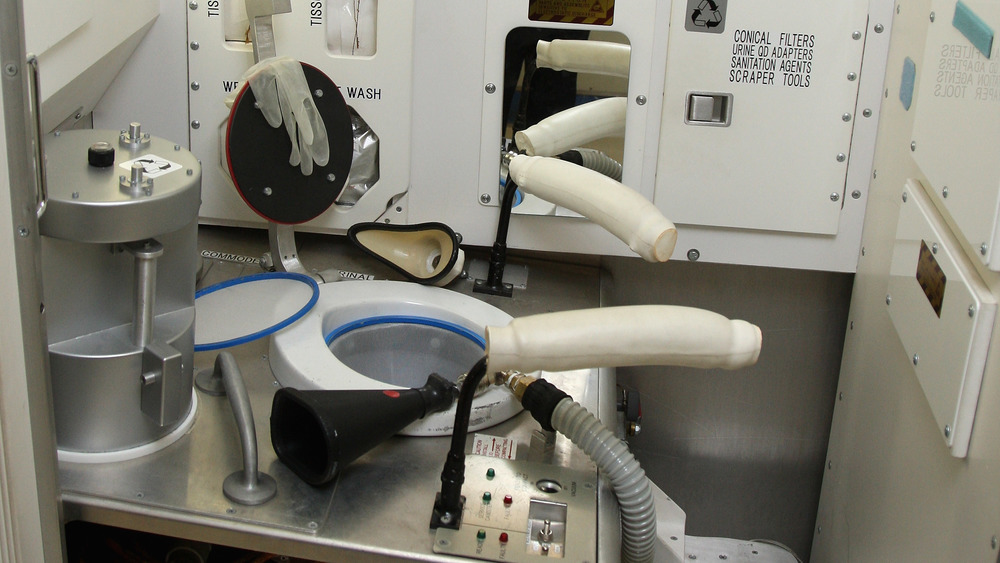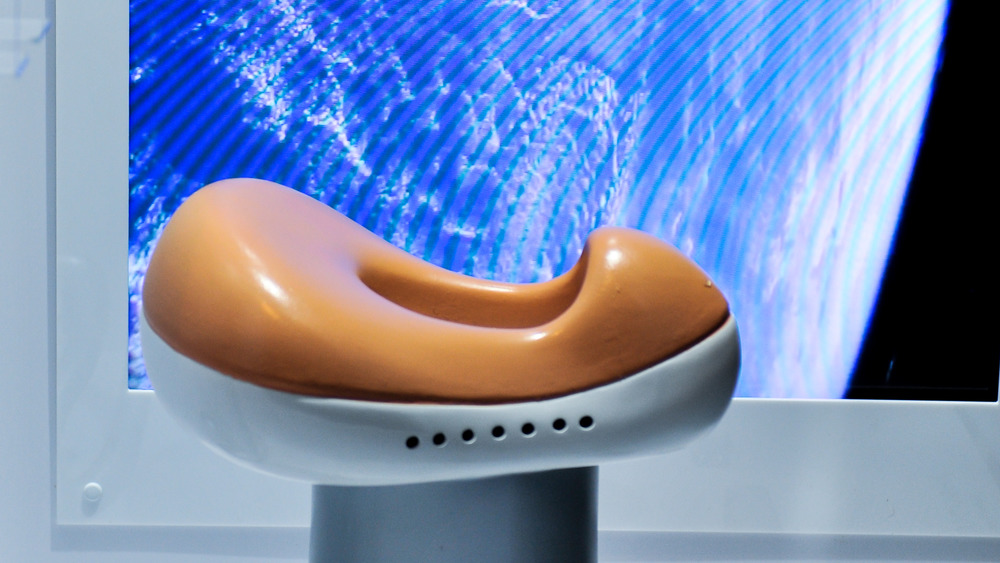The Mechanics Of Using The Bathroom In The Space Station
Astronauts on the International Space Station face quite a few unique challenges that make what are simple everyday routines down here on Earth a bit more difficult than usual. The biggest difference is obviously the microgravity (according to NASA, there's no such thing as "zero gravity"). This has lots of cool effects on non-human things, such as fire, which has more rounded flames in microgravity. And crystals grow differently, as well, creating more perfect shapes than those grown on Earth. But besides being super fun to float around weightlessly, the lack of gravity can have detrimental effects on the human body. Without gravity pulling them down, the muscles and bones of astronauts can quickly grow weak. As Mental Floss notes, they have to dedicate at least two hours of each day to working out in order to maintain muscle and bone mass.
And, as NASA also points out, astronauts have the same basic needs up in space as they do anywhere else in the solar system, and microgravity makes their morning routine a bit more tedious than the usual sleepwalking you do on the way to the shower each morning. After wiggling out of the sleeping bags that fix them to the walls so they don't float way while snoozing, they have to wash up like everybody else (thankfully, after all the workouts), brush their teeth, shave (some of them), and, of course, heed the call of nature. But, exactly how do they do that in microgravity?
Strap yourself in: we're going to the bathroom on the space station
A toilet on the ISS looks more like something out of a mad scientist's experiment than a classic commode. For starters, it's equipped with leg restraints to hold astronauts onto the seat, for obvious reasons. You may be able to eat while doing a stable float, but you really want to have a firm footing, so to speak, for something like a number two. After they're strapped in, there's a vacuum that sucks air and waste material down the toilet. Astronauts use a special funnel for urine, but although they share lots of stuff on the ISS, everybody's got their own personal urinal funnel to keep things sanitary. This is attached to a hose that takes the urine to wastewater tanks, which we'll get to in a minute. Fans keep the whole contraption dry after use.
Another luxury that we Earthlings take for granted down here is a door. That's right: According to the Japan Aerospace Exploration Agency, there's nothing more than a simple curtain separating the bathroom from the other areas of the station. You'd think that this would be cause for embarrassment, as there are usually noises that accompany these bodily functions that we'd all prefer to keep to ourselves. The ISS is actually so noisy from all the equipment on board, however, that no sound escapes the flimsy curtain. The whir of motors, fans, and other devices drown out any unwelcome sounds.
Solving the problem of how to urinate in space
All joking aside, processing human waste in space is actually serious business. According to Space.com, NASA has had some trouble dealing with the pesky need of astronauts to urinate during missions. The problem first arose before the administration even got a human into space. On May 5, 1961, Alan Shepard was all strapped in and ready to be the first American astronaut launched into space. Then various delays kept him there for five hours, after which time he had to go. "Man, I got to pee," he said into his radio. No one had prepared for this situation, and although it could have damaged the sensitive medical sensors, he ended up having to urinate in his spacesuit before he even took off. Urine became a problem again in 1963 when astronaut Gordon Cooper was forced to manually pilot the last Project Mercury flight through a dangerous re-entry after a urine bag on board leaked and damaged the craft's automated systems.
Luckily, NASA and other space administrations have finally gotten a handle on the problem. These days, all astronaut and lab animal urine on the space station is sent to wastewater tanks that filter it and turn it into potable water. Kinda gross, we know, but hey — these are pioneers. No one said that exploring the final frontier would be all glitz and glamour.


